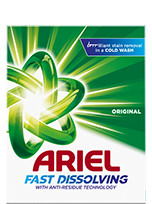Doing the laundry may seem a little complicated at first, with all those laundry symbols, wash cycles, temperature settings, and detergents to choose from.
Step 1: know your laundry symbols
If those laundry symbols on the inside of your garment look like some kind of Hieroglyphic language, we’re here to help you decode them. Rather than just throwing an item of clothing into the washer and hoping for the best, the fabric care label actually gives instructions on how to keep your clothes looking better, for longer. Laundry symbols can give you a lot of useful information like:
Whether the garment can be washed in the machine or can be hand washed only.
What temperature you should wash on.
Whether you can use bleach.
Whether the item can be dry cleaned.
How you should dry the garment.
Whether you can iron the garment, and which settings should be used.
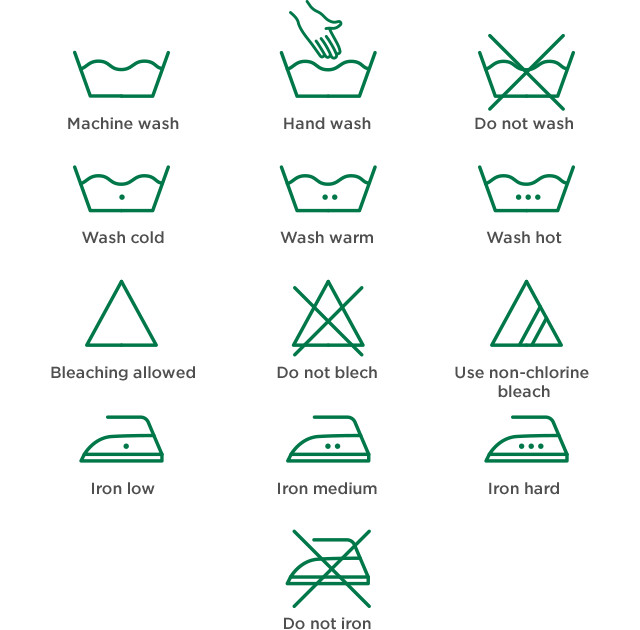
If you want a cheat sheet to refer to, see the infographic below or read our detailed guide on how to read laundry symbols.
Step 2: sort your clothes
We’ve all been there: A red sock has sneaked in with your white load and turned everything a shade of pink. Sorting your laundry is important, especially if dye transfer can happen, or if you’re using the wrong detergent or wash cycle for the types of colours and fabrics in your load. In fact, some of the main laundry issues can be avoided simply by sorting. These include:
Colours fading or changing tint. This can happen if you have a garment that contains dyes that may be easily affected when washed in a detergent containing bleach.
Whites coming out tinted. Some dyes can bleed during the wash, especially if washed at a higher temperature. This can lead to white garments getting ‘dyed’ during the wash. This can even happen in very cold water, depending on the garment.
Damaged wools and silks. These fabrics are vulnerable to enzyme attack and can be damaged by certain detergents. Some fabrics also undergo wear and tear if washed on the wrong wash cycle.
Avoid washing garments on the wrong setting by sorting your laundry into these groups:
Whites
Lights
Colours and darks
Delicates
Make sure you check the labels for specific wash care guidelines, and put each item in the right pile. If you want to become a pro at sorting laundry, you may be interested in our article on how to sort laundry.
Step 3: pick the right detergent
Not all detergents are created equal. Beyond the brand you also have different washing detergent types: washing powder, liquid, tablets, and gel. So, which is the right washing detergent for you?
| Detergent type | Properties | How to dose |
|---|---|---|
| POWDER | • The only detergent that comes with built-in safe oxygen bleach. • Use for washing whites • Use for getting rid of really tough stains. | Pour dosed detergent into the washing machine dispenser drawer. |
| LIQUID | • Doesn’t come with oxygen bleach. • Use to pre-treat stains. • Use for washing colours or dark loads. | Pour the detergent into the dosing device, depending on the load size and soiling, and place on top of the load. |
| PODS | • Ariel All-in-1 PODS doesn’t contain oxygen bleach. • Comes with a brightener. • Suitable for both colours and whites. • Use for stain removal. | Easy to dose. Just place a pod or two, depending on the soiling and size of the load, at the back of the drum before adding the laundry load. |
| GEL | • Optimised to work even in cold washes as low as 15°C. • Since gel doesn’t contain oxygen bleach it’s also good for colours and dark loads. | Use the dosing device and place it on top of the load. |
Read more about finding the right detergent for you.
Step 4: get the dosing right
Just as each detergent is different, each laundry load will also require a different dose, which will depend on:
How dirty your clothes are.
The hardness of your water.
The size of the load.
See the table below for a guide on laundry detergent dosing. If you’re not sure what water hardness is or how hard the water is in your area, read our article on water hardness.
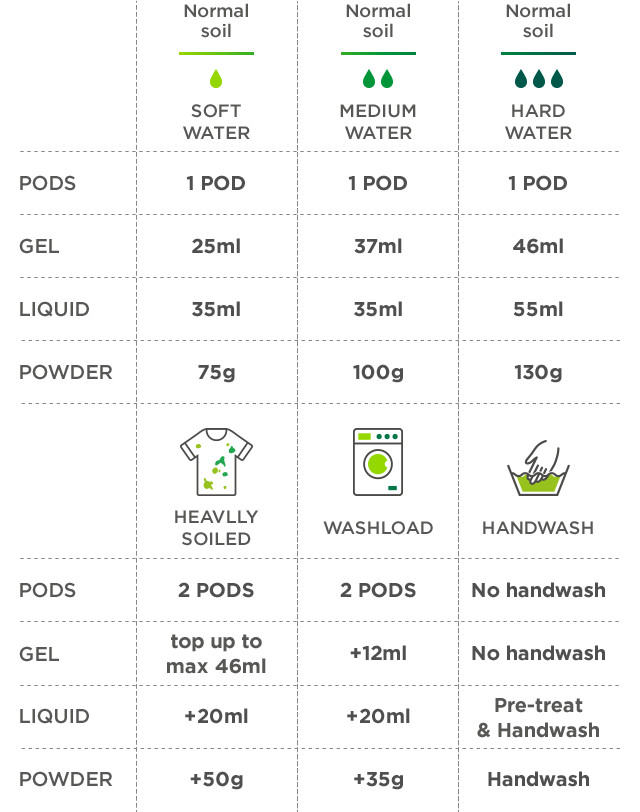
Step 5: soften and freshen clothes
Don’t forget to add fabric softener to the dispenser drawer in your washing machine. Fabric softener comes with many benefits, such as:
Enhances clothes and protects them from the signs of ageing, like stretching, fading, and bobbling.
Releases a waft of freshness from your clothes over the course of the day.
Gives your clothes a soft and comfortable feel.
Reduces wrinkling in garments, making them easier to iron.
Reduces the drying time of your clothes.
Decreases static cling.
Where to put the fabric softener?
In the case of a front-loader washing machine, you just measure the recommended amount of fabric softener, pour it into your machine’s dispenser tray, and let it get to work. Fabric softeners work great in top-loaders, too: The dispenser is usually found on the central column and the rest of the process is the same.
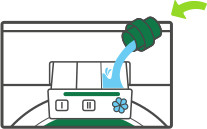
Step 6: load the washing machine correctly
If you’ve ever taken the laundry out after a wash and found white patches of detergent, chances are you’re overloading the machine. While you may think you’ve used too much detergent, it could be that your machine was simply overfull, so the detergent didn’t have the room it needed to dissolve. The drum doesn’t just have to hold your clothes, but also the water needed to wash your garments. If the drum is too full, the fabrics will simply soak up all the water, leaving your detergent nothing to work with.
To help out, here’s a quick guide on how full your washing machine should be:
Cottons: fill the machine 3/4 full.
Synthetics and delicates: fill the machine 1/2 full.
Quick wash: fill the machine 1/3 full.
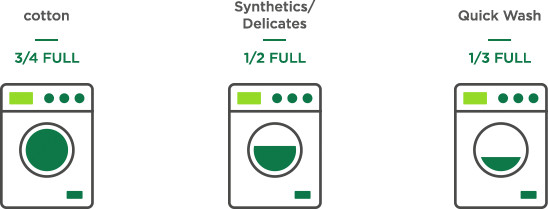
A quick way to check is to make sure you have left a gap between your load and the top of the drum that is at least as big as your hand. You can see more about how to load correctly in our video, or you can read about how to load a washing machine correctly for the best results.
And remember: For an outstanding clean and stain removal, you must place the POD at the back of the drum. The reason for this is that the water fills the drum of the machine from the bottom, so your POD will dissolve more quickly and effectively if you place it at the back of the drum.
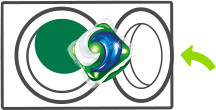

Step 7: select the proper wash cycle
Picking the right wash cycle and finding the proper water temperature can get confusing, especially with all the dials and settings on the machine. Selecting the right setting on your machine depends on the:
Garment and fabric.
Level of soiling.
To get a rough idea of which cycle to use when, see our table below for a primer on laundry cycles.
| Wash cycle | When to use it | How it cleans |
|---|---|---|
| COTTONS | To remove dirt and stains for durable fabric. i.e. sheets, towels, whites, heavily soiled items, cotton underwear and socks. | • High agitation wash • High-speed spin cycle • Adjustable temperature |
| SYNTHETICS | Everyday washing for synthetic garments with medium soiling. i.e. blended and synthetic fabrics, like polyester, jeans, and jumpers | • Medium agitation wash • Low-speed spin cycle • Warm to cool temperature |
| DELICATES | Gentle cleaning for delicate items. i.e. Lingerie, silk, wool, knits, and other delicate fabrics. | • Low agitation wash • Low-speed spin cycle |
| QUICK WASH | Everyday washing that needs to be done quickly, with minimal soiling, but not for delicate garments. | • Shortened wash cycle • High-speed spin cycle |
| HAND WASH | Gentle cleaning for very delicate, ‘hand wash only’ garments. | • Low speeds of agitation • Low speed spins |
| Temperature | How and when to use it |
|---|---|
| HOT WASH 60°C AND ABOVE | Separate items worn by a sick person from the rest of the laundry and, if the fabric care label allows, wash at 60°C, ideally with a powder detergent. |
| WARM WASH 30°C- 40°C | Wash items that have been in contact with body fluids, such as underwear, on 30°C-40°C. For best results, use a powder detergent. |
| COLD WASH 30°C OR BELOW | Wash lightly to moderately soiled items from your daily laundry load on low temperatures. |
If you’re not sure which wash cycle to pick, you can read about it in more detail in our article on finding the right wash cycle for you.
For outstanding stain removal results in 1 wash, you can count on Ariel. Whether you need help with finding the right laundry detergent or want great tips for doing the laundry, Ariel is here to help.
Related articles
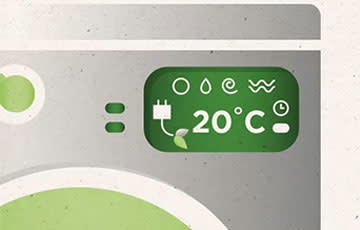
How to save energy and help protect our planet
When doing your laundry, you may not be thinking about protecting the planet – but we are.
Washing Symbols Explained
They may appear confusing, but washing labels are actually quite easy to understand.
Ariel's stain removal efficacy
Tough stains need an efficient laundry detergent that can remove them in the 1st wash. Ariel Original Liquid Detergent and Ariel Original Powder Detergent are both great choices.



